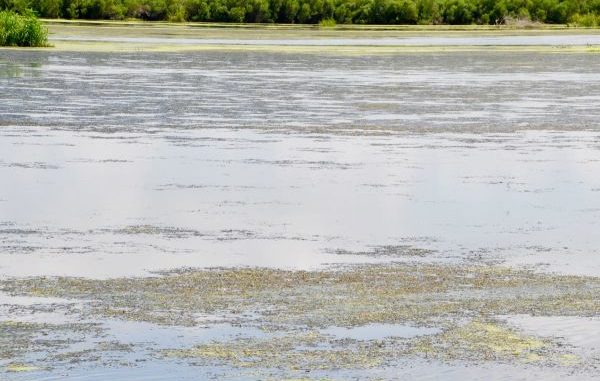
Accomplished tournament angler Stevie Nick doesn’t just pick a pond and put his trolling motor down. Instead, he has very exacting requirements for fishing areas.
“I’m looking for grass — the right kind of grass,” Nick explained as he quietly trolled over a huge shallow flat.
The right kind of grass is coontail or water milfoil. He doesn’t want duckweed, which he said interferes with bait presentation.
“Scum,” as Nick called dense mats of algae, is also undesirable, although he will work his boat along the edges of a scum line.
“The best grass is broken into clumps enough so that I can work a trolling motor and bait through them,” he explained. “If the grass is piled up, it’s a waste of time.”
He also looks for the perfect sight-fishing water.
“I want black water — very clear water stained brown,” Nick said. “If you look at the trolling motor head and it is stained yellow, it is the right water.
“Redfish will light up like pumpkins, and they are easy to see. They are golden.”
Perfect conditions include a bright sun and clear skies to make sighting fish easier. Naturally, the less wind the better; wind creates ripples on the water’s surface that make lure presentation difficult.
“That’s why we use rods with mico guides,” he said. “They allow precision casting.”
And he actually prefers water to be pushing in.
“A lot of people prefer falling tides,” Nick said. “I disagree: You don’t have to worry about getting stuck on a mud flat (with a rising tide), and I still catch fish.”
Ideal tide ranges are .4 to 1.3 feet.
The rule is to follow the fish, he explained. Wind and tides move the fish out of the shallows as the water falls out.
“The bait moves out and the redfish move out behind it into deep ponds or Oak River,” Nick said.
Ideally, the best conditions in the area include an east wind. Because of Nick’s strong preference for fishing with the sun behind his back instead of in his face, an east wind allows him to drift more and use his trolling motor less, creating less noise in the shallow water.
“I am also looking for areas that haven’t been burned through — those are areas that have been run through with a big motor,” he said. “It makes dirty water. Some tower boats are run through shallow areas to move the fish. (Boat operators) can count the fish and check their sizes so they can come back in a tournament and fish them.
“I always start fishing inside, in water shallower than crab traps are set. Crabbers stir the water up regularly when they run their traps. It takes three or four days with good tides to clear up the water in shallow ponds.”
Sightfishing for redfish in shallow water ponds is best from April through October.
